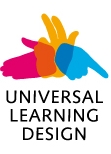Deaf education as well as any form of training that rotates around sign language is facing a huge challenge today as so many European countries and US states are going towards drastic cuts in social infrastructures. At the same time all educational institutions – be they schools or universities – stress the importance and the advantages of ‘globalization’ and promote, at least in discourse ‘global awareness’ for their students. It is essential to work on ways to preserve deaf education, interpeter training and sign language training even in the face of this crisis.The great advances in technology provide us with the most important tools we can use to rise to this challenge.
The Bibikit software – to be completed at the end of 2012 – will permit training of different kinds to happen even in situations when instruction hours are being severely diminished (possibly even in-between countries) thus bypassing the tremendous cuts which we are witnessing. Indeed it will also be an exceptionally useful, practical and very inexpensive tool for accessibility projects in public spaces such as museums. Though it is born specifically to function as a tool in sign language contexts, it also has massive unexplored potential for other kinds of instruction that benefit on the use of visuals.
Having first researched what was on the market in terms of text and video linking software, the Bibikit team is working towards creating a software which can be friendly, flexible and extremely stable.
In the BiBiKit project, an easy to use authoring kit is being developed, that enables students, teachers, and everyone to write and read bilingual bimodal texts: Electronic productions, which link text to sign language video. The main purpose of the project is to develop software that enables the user to link text to video, at the word, phrase and/or sentence level. The software will be developed for sign language and vice versa users, but can be used to easily link text to any video: e.g. to add annotations, captions, or navigation points. The three priorities are: Software that is stable, easy to use, and foolproof so that it may be used in a variety of contexts and by a very wide variety of users.
BiBiKit is a European project that was made possible with the support of the Lifelong Learning Programme (KA3) of the European Union. It is a 2 year project, the starting date was January 2011. In the first year, the software will be developed. In the second year, the software will be tested by using it in different contexts. In the BiBiKit consortium, 6 organizations from 6 EU countries work together. To involve more future BiBiKit users, colleagues and members of other EU consortia will be asked for their help. They are called ‘associated partners’. Each organization has 4 associated partners from an EU country. Associated partners are very important because they help to develop the software. BiBiKit will be validated in over 30 educational settings in 14 countries, by deaf and hearing writers and readers.
The BiBiKit community website will have a web shop, a user forum and up- and download facilities. An international BiBiKit conference will be organized at the end of the project, as a launching pad for further and wider cooperation in this field.
About the software
The target group for BiBiKit is very diverse. Users can be 8 years old or 88 years old. Users can be children, parents, teachers, LIS and interpreting students, researchers, publishers. The wishes of these users are very diverse, too. They go from ‘very easy, basic functionalities only’ to ‘very flexible, as many functionalities as possible’. For instance: Basic users want one text window, one video window, and an easy way to link text to video. Interterpreter trainers want to be able to film their students and use both video, audio and writing components – interactively. Researchers want more text windows, more video windows, and the option to link video to video, to link to sign libraries, maybe even to use SignWriting or HamNoSys. The Bibikit team has started from the basics: words or sentences in the text can be linked to sequences (parts) in the video. The video can be a translation of the text signed by the author, signed by a sign language interpreter or teacher, or even imported video of a signing ‘avatar’. Documents can be saved in various formats. Readers can read text and click on a word or sentence to see the linked video. User requirements and software specifications will be written in cooperation with 25 associated partners from 14 EU countries. Each partner will focus on the user needs of a specific target group/educational context: Deaf children, deaf students in higher education, sign language interpreter students, sign language teachers, formal and informal adult learning, e-learning.
As said before, for BiBiKit the first priorities are:
-
Stable: The software should not crash, and should work 2 or even 5 years from now.
-
Easy to use: Children should be able to use the software, but also their grandparents. Users can use BiBiKit right away, they do not have to go to a training course first, or read a thick manual.
-
Foolproof: Even when you make a mistake (you click on the wrong button, or you forget to click on a button), the programme should not crash, you should not lose your work. When you make a mistake, you should always be able correct it.
The BiBiKit Consortium
Main contractor and software development:
-
Møller-Trøndelag kompetansesenter, Trondheim (NO)
Co-ordinator:
Partners:
-
Hochschule HS MD-SDL-Stendal (DE)
-
Siena School for Liberal Arts (IT)
-
The Communication Centre for The Deaf and Hard of Hearing (IS)
-
Department of Education and Social Science, University of Central Lancashire (UK)
References
BERSLAB: http://www.ru.nl/publish/pages/610183/slcn4_poster_ebbinghaus.pdf.
BiBiKit: http://www.bibikit.eu.
ELAN: http://www.lat-mpi.eu/tools/elan/.
HamNoSys: http://www.sign-lang.uni-hamburg.de/projects/hamnosys.html.
ILEX: http://www.sign-lang.uni-hamburg.de/ilex/.
Link-it: http://www.spsm.se/Startpage/Educational-materials/Deaf-and-Hard-of- Hearing/Products/Link-it/.
SignLink Studio 2.0: http://www.signlinkstudio.com/.
SignSmith: http://www.shh.is/FileLib/skjalasafn/Guidelines_for_teachers_Oct_2003.pdf.
SignStream: http://www.bu.edu/asllrp/signstream/index.html.
SignWriting: http://www.signwriting.org/.
TegnBehandler: http://www.acm.no/tegnbehandler/.
Tegnspiller: http://www.acm.no/materiell/support/tegnspiller/tegnspiller_lesmeg.htm.
VideoText.web: http://www.oegsbarrierefrei.at/.









